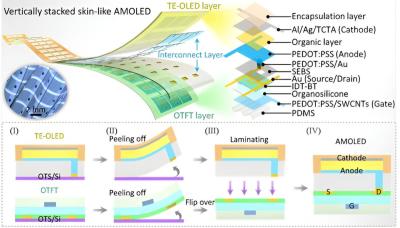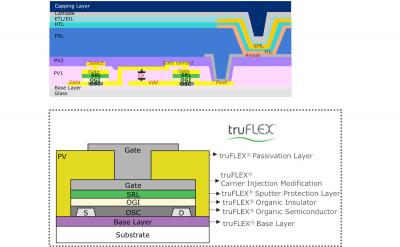Researchers develop an OLED-on-OTFT process to create high aperture wearable OLED devices
Researchers from China's Northeast Normal University developed a new integration strategy (called “discrete preparation-multilayer lamination”) that enables the deposition of OLED devices directly on top of OTFT transistors, to enable high-aperture wearable skin-patch OLED devices.
The new method starts with the preparation of the different layers on different substrates to avoid chemical and physical damage caused by process interferences, and then the transfer of the OLED devices onto the OTFT transistors. The researchers say that the resulting AMOLED display offers a high apreture ratio (83%), high mobility






